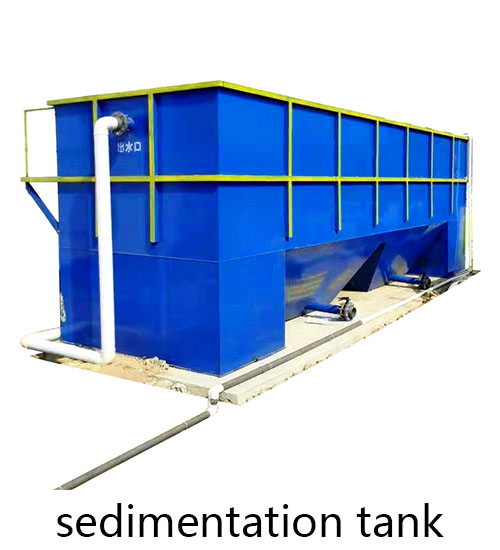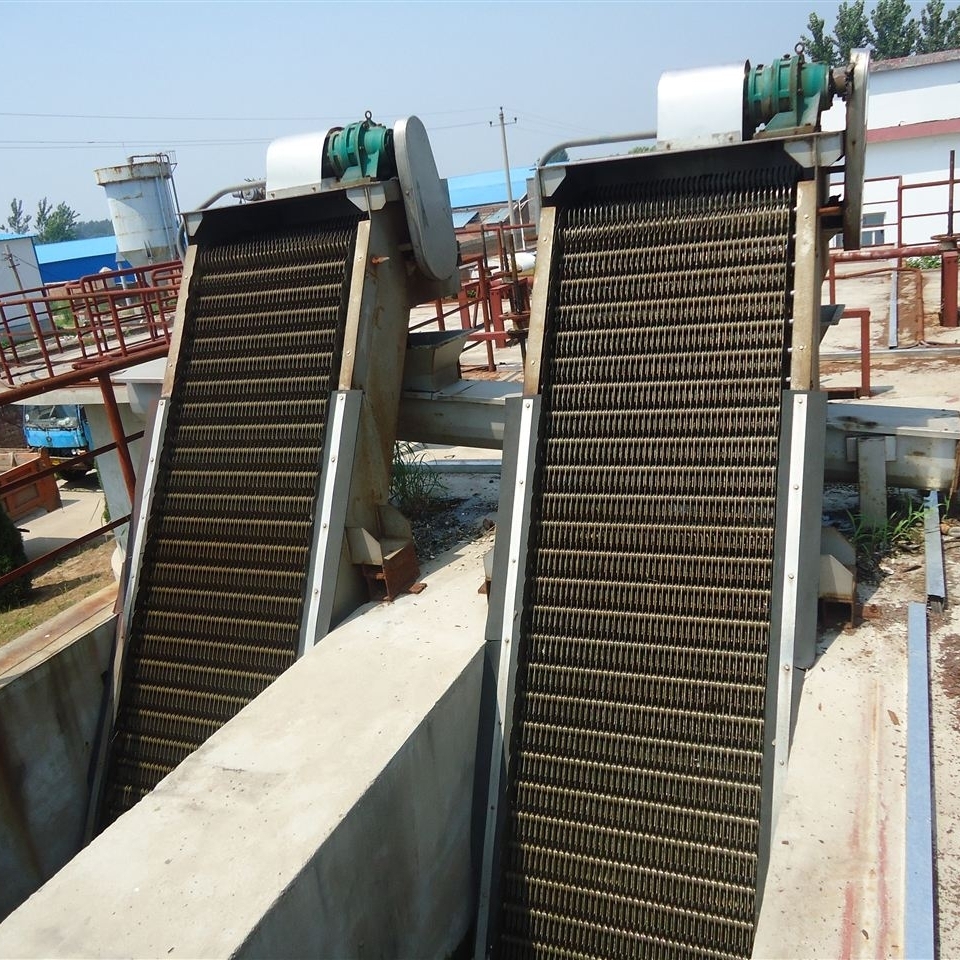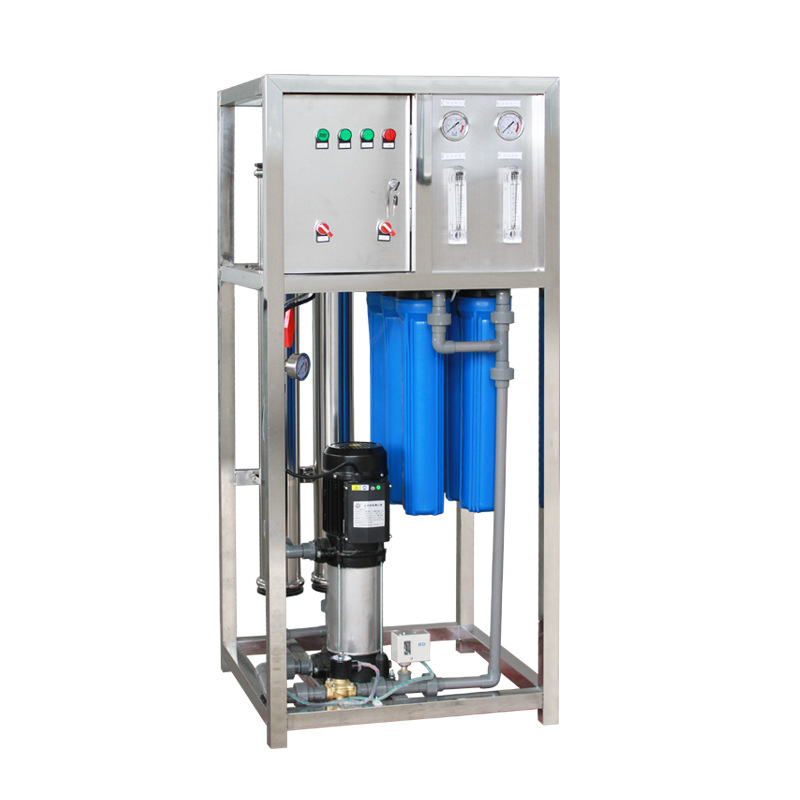In the field of water treatment, sedimentation tanks play a vital role. Different types of sedimentation tanks are widely used in both water supply treatment and drainage treatment. These sedimentation tanks mainly rely on gravity to effectively separate solid particles in the water, thereby achieving the purpose of purifying water quality.
Types of water treatment sedimentation tanks
I. Classification according to precipitation principle
1. Free sedimentation tank: Free sedimentation tank is the simplest sedimentation tank, which mainly uses gravity to make suspended matter in water settle naturally. Its advantages are simple structure and easy maintenance, but the treatment effect is greatly affected by factors such as weather and temperature.
2. Contact sedimentation tank: The contact sedimentation tank is an improved sedimentation tank. By setting up devices such as inclined plates or inclined tubes, the sedimentation area is increased and the sedimentation efficiency is improved. Its advantage is that the treatment effect is stable, but the structure is more complicated and requires regular maintenance.
3. Suspended solids sedimentation tank: The suspended solids sedimentation tank mainly uses coagulants to condense the suspended solids in the water into clumps, and then settles by gravity. Its advantage is high treatment efficiency, but it needs to add coagulants and the cost is relatively high.
II,Classification by water flow
1. Horizontal flow sedimentation tank: Horizontal flow sedimentation tank is a commonly used sedimentation tank, the water flow direction is horizontal. Its advantages are simple structure and high treatment efficiency, but it occupies a large area.
2. Vertical flow sedimentation tank: The water flow direction of the vertical flow sedimentation tank is vertical. Its advantages are small footprint and high treatment efficiency, but it requires the installation of multi-stage sedimentation devices and has a more complex structure.
3. Radial flow sedimentation tank: Radial flow sedimentation tank is an improved sedimentation tank with radial water flow. Its advantages are high treatment efficiency and small footprint, but it requires the installation of central pipe and other devices, and the structure is more complicated.
III,Classification by purpose
1. Sedimentation tank in sewage treatment plant: Sedimentation tank in sewage treatment plant is one of the important facilities in sewage treatment process, mainly removing suspended solids, organic matter and other pollutants in water. Its characteristics are high treatment efficiency, large area, and need to be used in conjunction with other sewage treatment equipment.
2. Industrial wastewater treatment sedimentation tank: Industrial wastewater treatment sedimentation tank is mainly used to treat wastewater generated in the industrial production process. Its characteristics are high treatment efficiency and complex types of pollutants. It is necessary to select appropriate treatment processes for different industrial wastewaters.
3. Drinking water treatment sedimentation tank: Drinking water treatment sedimentation tank is mainly used to remove suspended matter, organic matter and other pollutants in water to improve water quality. It is characterized by high treatment efficiency, sanitation and safety, and needs to be used in conjunction with other water treatment equipment.
IV. Characteristics, advantages and disadvantages of sedimentation tanks
Horizontal flow sedimentation tank
The surface shape of the horizontal flow sedimentation tank is usually rectangular. Its working principle is: after entering the sedimentation area, the water flow undergoes energy dissipation and rectification, and then slowly flows horizontally. During this process, the suspended solids in the water gradually sink to the bottom of the pool, while the water out of the sedimentation area overflows the weir and is discharged out of the pool through the outlet trough.
Structure:The surface of a horizontal flow sedimentation tank is usually rectangular. In the water inlet area, the water flow is dissipated and rectified, and then slowly flows horizontally in the sedimentation area. In this process, the settleable suspended solids in the water gradually sink to the bottom of the tank. When the outflow of the sedimentation area overflows the weir, it is discharged out of the tank through the outlet trough.
The advantages of the horizontal flow sedimentation tank include its strong adaptability, great potential and stable effect in water treatment, and it is also very convenient to operate and manage. In addition, it is low-cost, can use local materials and simplify the construction process. When equipped with mechanical mud discharge equipment, its mud discharge effect is even better.
There are also some shortcomings of the flow sedimentation tank. The first is that it occupies a relatively large area, and the second is that there are certain difficulties in mud discharge. Despite this, the horizontal flow sedimentation tank is still an ideal choice in many occasions. It is usually suitable for large and medium-sized water treatment plants, and can also be used as a pre-sedimentation tank when the raw water contains a large amount of sand. The water distribution uniformity of the horizontal flow sedimentation tank needs to be improved; if a multi-bucket mud discharge method is adopted, each bucket needs to be independently equipped with a mud discharge pipe, and the operation is relatively cumbersome; if a mud scraper is used for mud discharge, its support and drive components are immersed in water for a long time, which is easy to rust.
Selection suggestion:It is the first choice for water plants with a daily processing capacity of more than 100,000 tons, and has a significant effect on low turbidity water sources. It is particularly suitable for areas with high groundwater levels and poor geological conditions. It is also suitable for sewage treatment plants of all sizes, including large, medium and small.
Vertical flow sedimentation tank
The body of a vertical flow sedimentation tank is usually designed to be round or square. Working principle: When sewage enters the tank through the inlet of the central pipe, it will be evenly diffused to the surrounding horizontal sections under the guidance of the reflector and slowly flow upward. During this process, those suspended particles whose settling speed exceeds the rising speed of the water flow will gradually sink and eventually enter the sludge hopper. The supernatant will flow out of the tank through the outlet weirs around the top of the tank.
Structure:The vertical flow sedimentation tank is designed in a circular or square shape. Sewage enters the tank through the inlet of the central pipe, is evenly distributed to the surrounding horizontal sections under the guidance of the reflector, and flows upward slowly. In this process, suspended particles with a settling speed higher than the rising speed of the water flow will settle into the sludge hopper, while the supernatant will flow out from the outlet weirs around the top of the tank.
The characteristic of a vertical flow sedimentation tank is that the water flow direction is straight up and down, which is completely different from the horizontal flow direction of a horizontal flow sedimentation tank.
The advantages of a vertical flow sedimentation tank are that it occupies a relatively small area, is easy to discharge mud, and has a compact overall structure.
However, it also has some disadvantages, such as relatively large construction difficulty, low rising velocity resulting in small water output and unsatisfactory sedimentation effect. Therefore, vertical flow sedimentation tanks are usually suitable for small water treatment plants. The depth of the pool is large, which increases the difficulty of construction; the sedimentation tank has relatively weak adaptability to shock loads and temperature changes; the cost is relatively high, which may exceed the budget of some small sewage treatment plants; if the pool diameter is too large, uneven water distribution may occur, affecting the treatment effect.
Selection suggestion:The circular structure saves floor space and is suitable for high-density urban water plants. It is used for small sewage treatment plants with small water volumes. The volume of a single tank is usually controlled below 1000m³.
Radial flow sedimentation tank
Large radial flow sedimentation tanks are often circular in design, while small tanks may be square or polygonal in shape. The inlet and outlet layout is similar to that of vertical flow sedimentation tanks, with a central inlet and peripheral outlets. Principle: In radial flow sedimentation tanks, water flows radially into the sedimentation area and then slowly rises along the periphery, forming a circular flow path. This design allows particles to have more opportunities to come into contact with the water flow, thereby improving sedimentation efficiency. At the same time, the radial flow sedimentation tank has a larger diameter and can handle larger water volumes.
Structure:In radial flow sedimentation tanks, water flows in radial flow. Sewage can enter the tank from the center or the periphery. For center-inlet sedimentation tanks, sewage first enters the center pipe and then flows evenly to the surrounding areas through the rectifier. The supernatant overflows through the outlet weirs on all sides, while the sludge settles to the bottom of the tank and is collected by a scraper or a scraper and suction machine in a sludge hopper and discharged by gravity or pump suction. The inlet channel of the peripheral inlet sedimentation tank surrounds the tank, and its supernatant also overflows through the outlet weir, and the sludge treatment method is the same as that of the center-inlet type.
The water flow in the radial flow sedimentation tank is characterized by radial flow from the center to the surroundings. As the cross-section of the water flow gradually expands, the flow rate gradually decreases, allowing the suspended particles in the water to settle. This sedimentation tank performs well in treating high turbidity water. Precipitation effect Significant The high efficiency of the mechanical sludge discharge device is a key equipment in the field of water treatment.
It also has some disadvantages, such as high investment and management costs, difficult construction, difficult maintenance of the scraper device, and high consumption of metal materials. It occupies a relatively large area; the construction cost may be slightly higher than other types of sedimentation tanks.
Selection suggestion:It is mainly suitable for large and medium-sized water treatment plants, and is often used as a pre-sedimentation tank in the treatment of high turbidity water.
Inclined plate (tube) sedimentation tank
Based on the principle of “shallow sedimentation”, the sedimentation efficiency is significantly improved by adding inclined plates or honeycomb inclined tubes in the sedimentation tank. Its surface load is about twice that of ordinary sedimentation tanks. This type of sedimentation tank can be divided into three types: counter-flow, co-flow and lateral flow. Among them, the upflow counter-flow inclined plate (tube) sedimentation tank is the most widely used in sewage treatment.
The structural feature of the inclined plate and inclined tube sedimentation tank lies in its unique inclined plate or inclined tube design, which can effectively shorten the particle settling distance and improve the sedimentation efficiency. In addition, its simple structure and convenient operation and maintenance are also one of the reasons why this type of sedimentation tank is widely used. The advantages of inclined tube and inclined plate sedimentation tanks include high sedimentation efficiency and compact tank design, which saves a lot of space.
This type of sedimentation tank also has some disadvantages, such as the high price of inclined tubes and inclined plates. Under certain conditions, inclined plate and tube equipment may have the problem of algae growth, which brings inconvenience to maintenance and management; the mud discharge function of this sedimentation tank faces challenges and has certain difficulties; the inclined plates and inclined tubes are easily blocked due to sediment accumulation.
Selection suggestion:It uses shallow pond theory to achieve rapid sedimentation, and is particularly suitable for low-temperature and low-turbidity water sources. It is suitable for primary sedimentation treatment of urban sewage, but not suitable as a secondary sedimentation tank for biochemical systems.
Comprehensive suggestions:For water plants with a capacity below 50,000 tons, vertical flow should be given priority; large and medium-sized water plants should adopt a combination of horizontal flow and inclined plate processes; high algae water sources need to be equipped with pre-oxidation devices to enhance the efficiency of the inclined plate pool.






